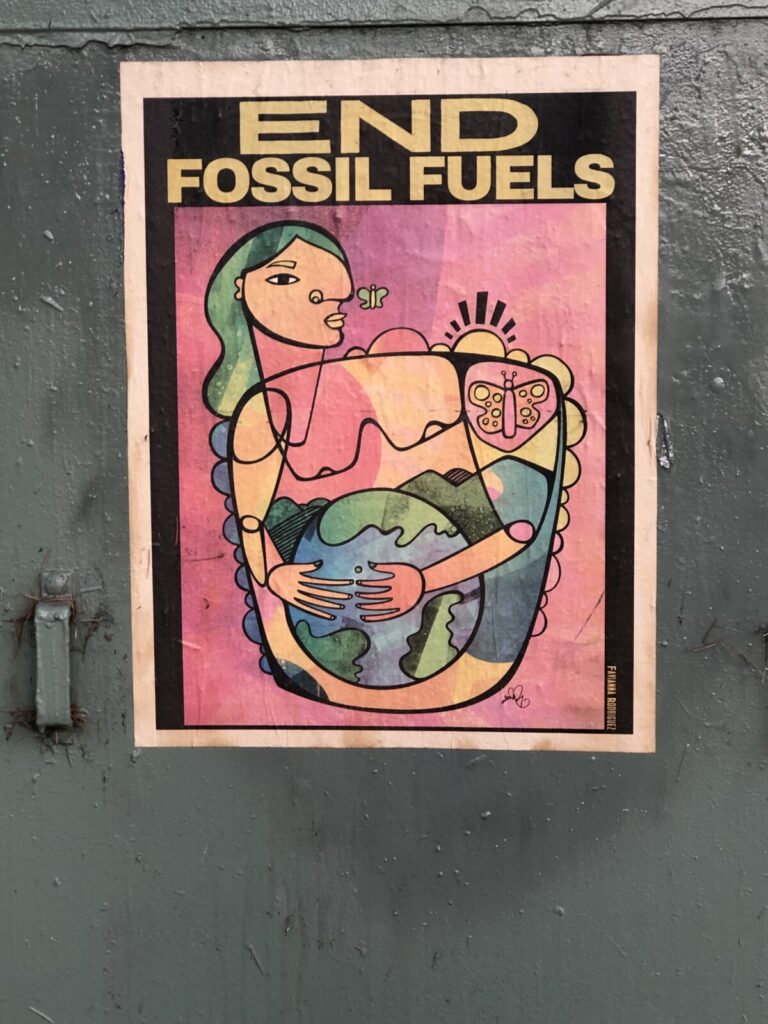Berkeley Measure GG, the Large Buildings Fossil Fuel Emissions Tax, would tax owners of the largest buildings in Berkeley—over 15,000 square feet—for the climate pollution generated by their use of methane gas. (When natural gas is used for cooking and heating, it often leaks methane, a gas that is both poisonous and extremely destructive to the environment.) 1
The tax money raised will support climate equity and environmental justice across the City. It will pay for climate-friendly building upgrades for homeowners, renters, and businesses. Berkeleyans will get financial help with a range of upgrades, including solar, battery storage, heat pumps, ACs, induction cooktops, panel upgrades, wiring, EV charging, insulation, and more.
As the Green Party of Alameda County said in their Voter Guide:
The climate impact of Measure GG is big, because methane use in buildings accounts for nearly a third of Berkeley’s climate emissions. In fact, the Berkeley Planning Department says Measure GG, if fully implemented, could “help achieve Berkeley’s goal of becoming a Fossil Fuel Free City and mitigate climate change impacts.”
Based on City projections, Measure GG could fund the majority of the estimated cost to eliminate emissions from all low-rise residential buildings, while compelling the owners of Berkeley’s largest buildings to eliminate their gas use in order to avoid paying the tax. There is also great potential for other cities in the Bay Area to follow suit, widening the impact even further.
Measure GG was written in consultation with Berkeley Rent Board members and tenants’ advocates.
This special tax would only be applied to owners of the largest greenhouse gas emitting buildings 15,000 square feet or larger and prohibits landlords from passing the tax onto their renters.
It also includes money to prevent displacement, and gives landlords incentives and technical support to improve energy efficiency, reducing energy bills for all.
The measure was also crafted with an eye toward combating environmental racism. Retrofit funding would be prioritized in South and West Berkeley (as identified in the state’s Enviroscreen database documenting various forms of environmental injustice and racism).2
Berkeley’s political elite don’t seem to think solving climate and investing in our community are urgent problems, and the massive real estate and business interests funding the opposition campaign would rather save pennies on the dollar than invest in our communities.
The reality is that Berkeley urgently needs funding for climate-friendly building upgrades. Beyond the urgency of reducing emissions – Berkeley is severely behind on its goals and needs to reduce emissions by another 50% by 2030 – beginning in 2027 our residents will be faced with new regional regulations that will prohibit the installation of gas water heaters and furnaces.
As a result, many buildings will require substantial electrical work just to prepare to meet these regulations, a cost that many of our seniors and vulnerable populations cannot afford to bear.
These costs are real. So are the costs of spiraling home insurance, price increases due to climate disaster-induced supply chain disruptions, and healthcare costs attributable to fossil fuel use. The Bay Area alone pays $1.2 billion a year in healthcare costs attributable to methane use in buildings.

Despite this, our government leaders say we should protect and prioritize the costs of deep-pocketed business interests. They say the cost of action is too high. In reality, the cost—economic, environmental, and social—of their inaction is, literally, sky-high.
The unfortunate reality is, in capitalist countries like ours we are not used to thinking about future impacts, or calculating social costs for anything. That would be, well, socialism. But now we are staring down an apocalyptic climate event. So we have to begin thinking in new ways about economics.
Measure GG looks at the question of cost in a different way, through the use of “social cost” estimates. These estimates attempt to put a dollar figure on the damages to our climate, environment, health, and economy from the status quo where Berkeley continues to use natural gas. The social costs portion of the white paper by Daniel Tahara and Brianna McGuire of Fossil Free Berkeley and the footnoted citations present a detailed look at how these calculations are made. You may find some of the material wonky. There are many points of view on how to calculate the social cost. And, well, it is damned hard to put a numeric value on life, and in the end, the numbers are not why advocates are supporting GG.

The social costs of climate change, and of our “natural” methane gas appliances that are quietly poisoning our families, are real. So are the costs of spiraling home insurance, price increases due to climate disaster-induced supply chain disruptions, and healthcare costs attributable to fossil fuel use. The Bay Area alone pays $1.2 billion a year in healthcare costs attributable to methane use in buildings.
Doctors, environmentalists, labor leaders, tenants advocates, faith leaders, and other community members support Measure GG because they believe in the investment GG makes in our health and environment.
Improving the health of the city’s residents, and protecting the climate for them and our planet, will take effort from all, especially those with the largest means.
For more information see the following resources:
- * Campaign website: https://fossilfreeberkeley.org/
* Ballot Measure Text: https://fossilfreeberkeley.org/ballot-text-large-buildings-fossil-fuel-emissions-tax/
* Berkeley Daily Planet op-ed:
https://www.berkeleydailyplanet.com/issue/2024-10-01/article/50866?headline=Vote-YES-on-Measure-GG-to-Replace-Greenwashing-with-Real-Climate-Action–George-Lippman-Berkeley-People-s-Alliance
- Natural gas is 90% methane. When it combusts, it releases NOx (nitrogen oxides) and other by-products which contribute to smog and respiratory illness.
It also leaks through pipes and doesn’t always fully combust, in which case methane leaks. Methane is a climate pollutant 84 times as strong as carbon dioxide. See https://www.ran.org/the-understory/natural-gas-is-methane/ ↩︎ - “CalEnviroScreen is a screening methodology that can be used to help identify California communities that are disproportionately burdened by multiple sources of pollution,” California Office of Environmental Health Hazard Assessment https://oehha.ca.gov/calenviroscreen/report/calenviroscreen-40 ↩︎
